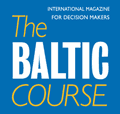
All rights reserved.
You may not copy, reproduce, republish, or otherwise use www.baltic-course.com content
in any way except for your own personal, non-commercial use.
Any other use of content requires the hyperlink to www.baltic-course.com.

Printed: 26.04.2024.
 PrintEBRD spending heavily to keep Eastern Europe crisis at bay
PrintEBRD spending heavily to keep Eastern Europe crisis at bay
 |
|---|
Kicking off its annual meeting, the EBRD said it has ploughed EUR 2.3 billion (USD 3.1 billion) into the region so far this year -- and aims to invest a record EUR 7 billion by the end of 2009.
Formed in 1991 to aid the transition of former communist nations to market economies, the EBRD invests across 30 countries including Belarus, Latvia, Hungary, Russia and Ukraine.
"The crisis has presented the EBRD with unprecendented challenges," the bank's president Thomas Mirow told the opening session of the board of governors. "In order to face these challenges, we must position the EBRD so it can play a dynamic and constructive role in crisis and recovery."
Mirow said the bank would continue to focus on strengthening balance sheets, developing capital markets and currency lending in the battered financial sector.
The president also vowed it would continue to provide capital for small- and medium-sized businesses in the region. It would also expand efforts to improve energy efficiency and combat climate change.
Bank governors, leading business officials and policymakers convened in London to discuss battling a global recession which has slammed the EBRD's investment zone.
The economies of Central and Eastern Europe were expected to shrink by a collective 5.2 percent this year before staging a slight recovery with growth of 1.4 percent in 2010, according to EBRD forecasts.
Mirow acknowledged that very high levels of consumption, foreign debt and spending had sparked "unsustainable" current account deficits in the former Soviet bloc. "Until 2008, strong capital inflows, demand for exports and high prices for commodities helped to fuel the region's growth," he said. "But these forces also veiled vulnerabilities such as growing -- in the long term -- unsustainable current account deficits. They also reduced the incentive to diversify economies and implement reforms.''
"The abundance of cheap money triggered investment consumer booms. Thus those years created an increasing dependence on external demand and foreign financing. When the flow of capital dried up, the crisis hit the region hard," Mirow said.
The EBRD's chief economist Erik Berglof told reporters that despite the problems, the shrinking economies of Central and Eastern Europe had avoided a "worst-case scenario."
"While the Western credit crunch of 2007 and subsequent economic crisis last year severely impacted the region in October, it is important to stress that worst-case scenarios have been avoided," Berglof told a press briefing.
"There have not been twin crises for financial sectors and currencies. Countries have not defaulted. Crucially, the West has not turned its back on its neighbors in the East."
He said that "many economies will contract this year -- some significantly -- as will the region as a whole. There are signs that the situation has stabilized but the outlook is for a slow recovery with risks on both sides."